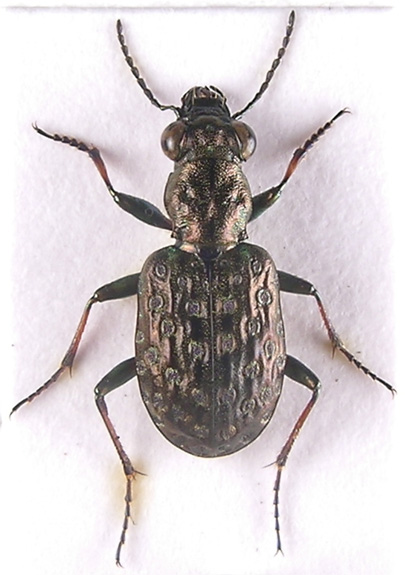
Male
Larger and darker than E. riparius, usually appearing somewhat violet in sunlight rather than green as riparius, both species are soon recognised by naked eye in the field.
At least 8 mm. Head with eyes wider than pronotum, labrum and mandibles prominent, antennae dark with 3 or 4 basal segments metallic, usually green. Pronotum quadrate or nearly so with deep median furrow. Entire upper surface dark, almost black, metallic and very strongly sculptered. Each elytron with three rows of very shiny raised fascia although those lateral and apical are somewhat fused. Legs long, femora, tarsi and extremities of tibiae metallic green (cf. E.riparius) but the colour may (rarely) be darkened to the point of being ambiguous. Prosternum glabrous although the prosternal process may have a few long hairs, a condition also seen in E. uliginosus � but here the tibiae are entirely dark and metallic, and the head is not broader than the pronotum.
Description from 4 Watford specimens at X20
See also ID Aids for a key to Elaphrus
� Bower, T. 1974 Oecologia (berlin) 14, 139-196
� A very local species with records from south and (mostly) western England and Wales and a few from mid western Scotland. (Luff)
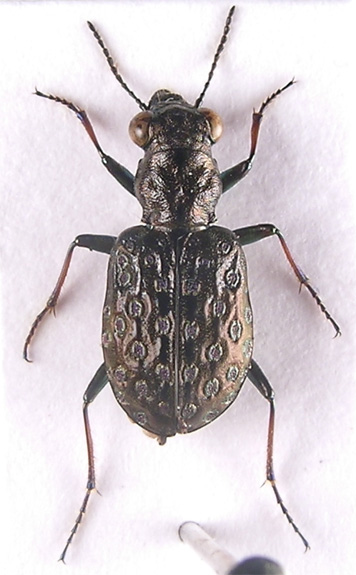
Female
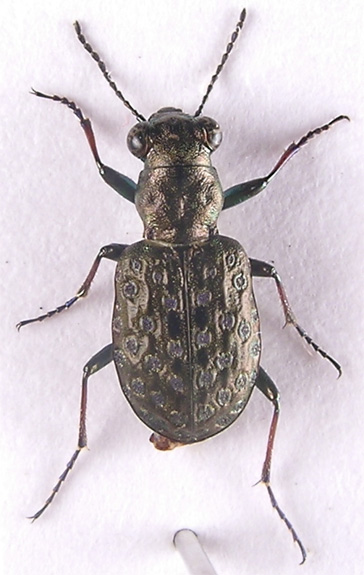
Male
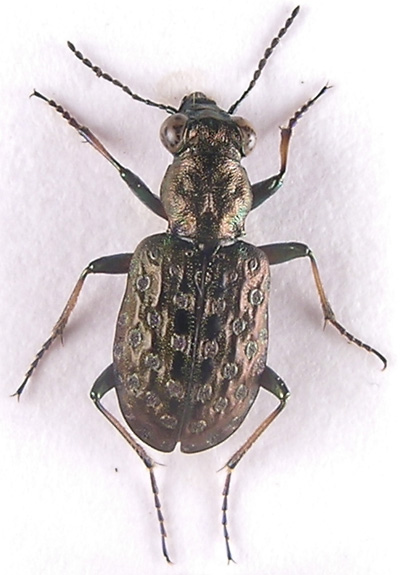
Male
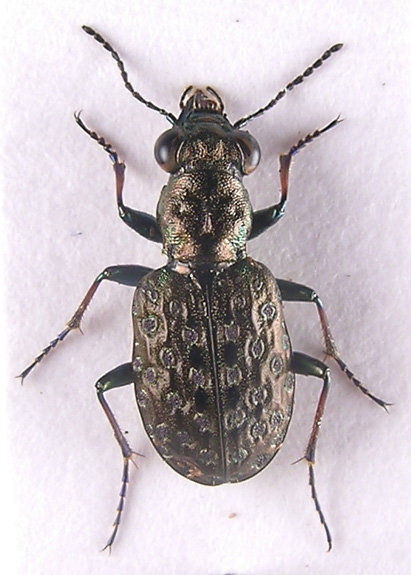
Male
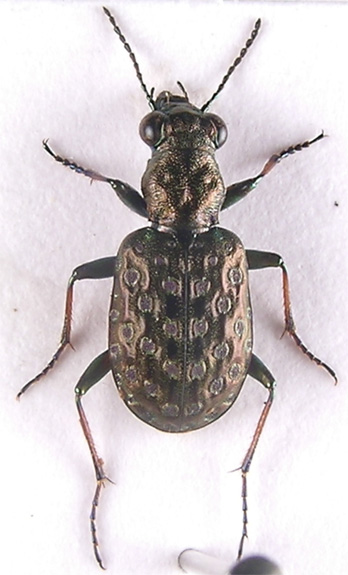
Male
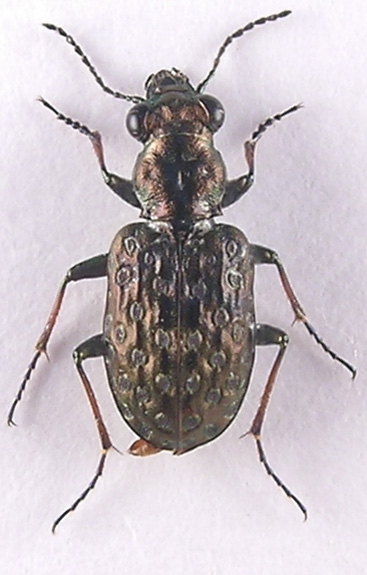
Male
Home